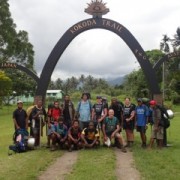… Prepared by TMA Member Maitland NSW:Dr Puru Sagar Chromis Sept 2012
It is generally well known that you can’t take certain medications into Middle Eastern countries but did you know that there are restrictions on medications imported into Japan, even for personal use? It is illegal to bring into Japan some over-the-counter medications including cough and cold, sinus, and allergy medications containing stimulants or codeine. Did you know that your body (specifically, your liver) can convert a 30mG tablet of codeine into as much as about 5mG of actual morphine? In Japan, codeine is thus considered a narcotic and its importation is prohibited. An illegal or backyard chemist can distil as much as 23mG of morphine out of a 30mG tablet.
Japan will generally allow up to a month’s supply of your personal medication as long as it is not a prohibited substance (such as narcotics and stimulants). However, you will still need to declare your medication at customs. Quantities larger than a month’s supply, including syringes, pumps, and CPAP machines, may still be allowable provided you have pre-arranged an import certificate called the “Yakkan Shoumei”. You will need two copies of an Import Report of Medications, a signed Declaration, an Explanation of the Products, a copy of a doctor’s Prescription or Direction, your travel documents listing arrival date and port, and a return envelope with Japanese postal stamps. Only when the Pharmaceutical Inspector “can confirm that your application documents are complete and he admits that you speak the truth, he will send you a ‘Yakkan Shoumei’ by post”. The Japan Ministry of Health lists an example form filled out by one Sherlock Holmes trying to import morphine for personal use during a conference in Japan!
The US Government warns its citizens that “some US prescription medications cannot be imported into Japan, even when accompanied by a customs declaration and a copy of the prescription” and that Japanese officials have detained travellers carrying prohibited items “sometimes for several weeks”. Apparently, Japanese officials do not make on-the-spot humanitarian exceptions.
If you are going longer than a month, please note that Japanese doctors can prescribe similar, but not identical, medications to yours (the generic will be the same but the brand name will be different). You can generally find a list of English-speaking doctors and medical facilities on the web, noting that medical treatment in Japan is world class but expensive. Buying drugs such as Viagra or Prozac on the black market in Japan can lead to arrest and imprisonment.
Prior to travelling overseas, it is wise to undertake some preliminary research well in advance of your travel date about medication importation, even if that medication is for personal use. A good place to start is atwww.smartraveller.gov.au but more comprehensive information is generally available from the embassy/high commission websites or that country’s Ministry of Health website. If in doubt, ask your TMA doctor.
Read More »


